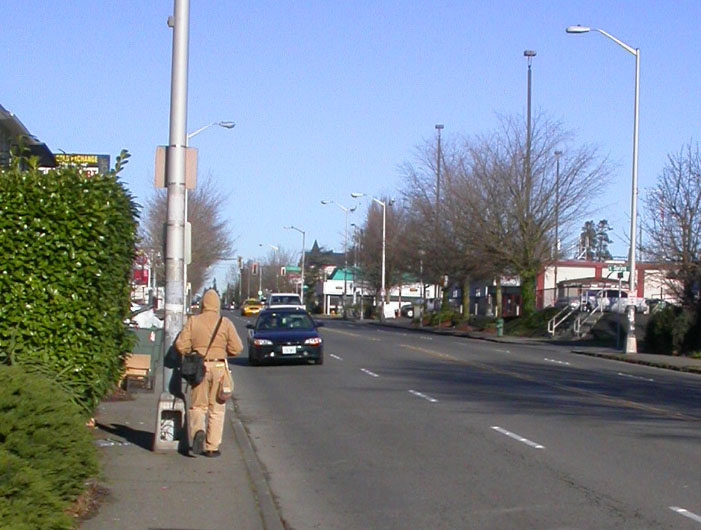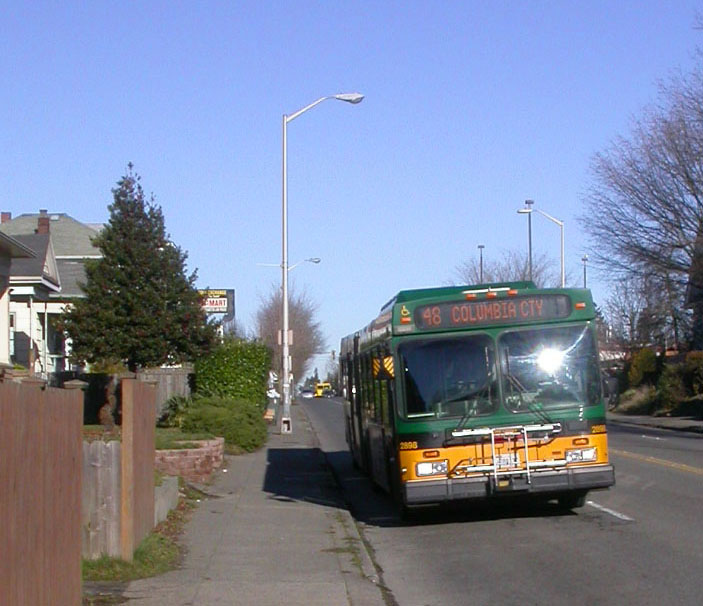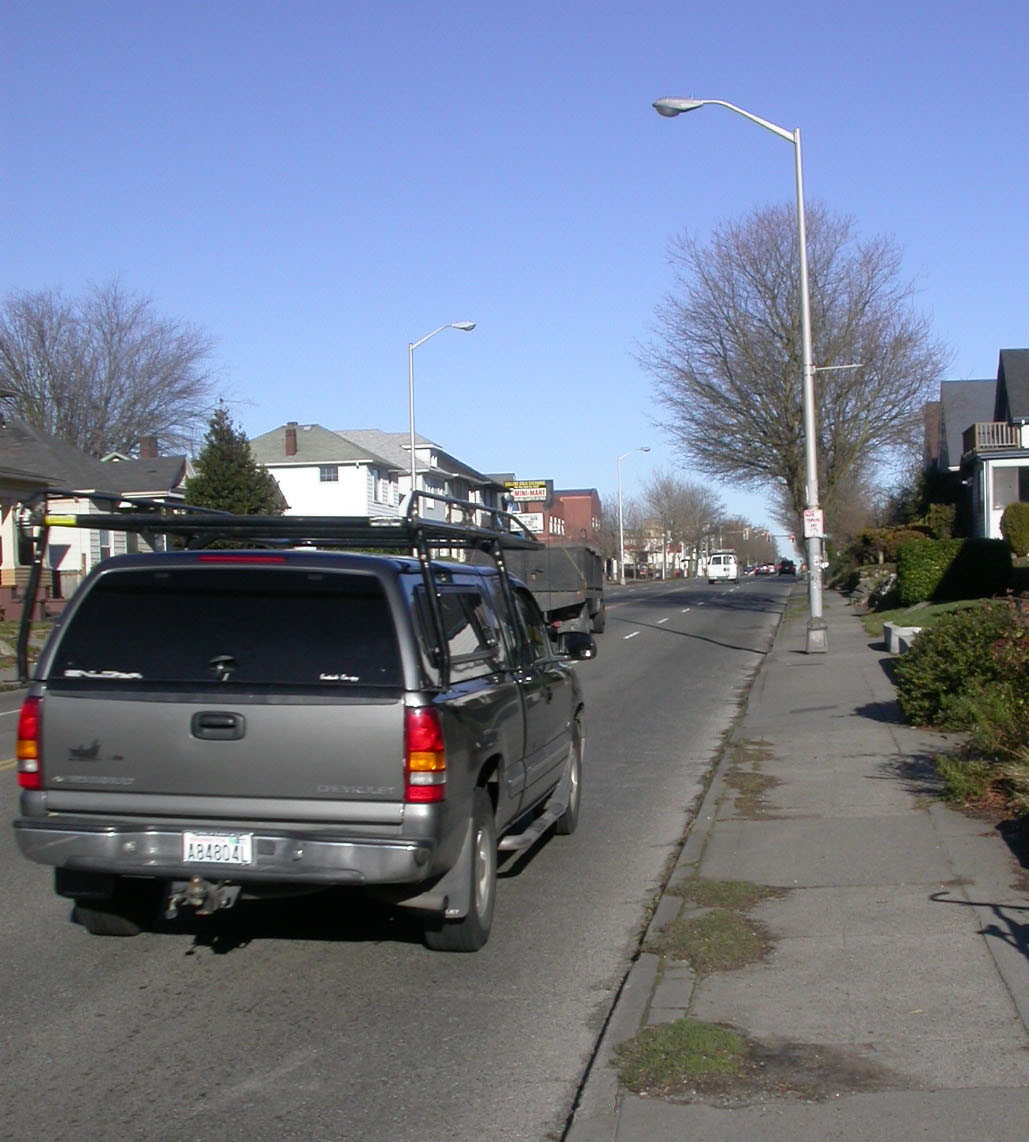23rd Ave is a Festering Gash Through the Central District: Put That Road on a Diet !

Looks like a pleasant place for a promenade, no? What fun to push a stroller around that streetlight pole as oncoming traffic rushes past an arms-reach away.

Oh, how exhilarating to feel the wind in your face as a bus roars by so close you could reach out and touch it.

Or for an exciting variation, try walking with your back to the traffic, and see if you can keep yourself from flinching each time a car screams up from behind you.
This is 23rd Ave in the Central District, between Spring and Marion, about the suckiest pedestrian street you could imagine.
The root problem is simple: the 23rd Ave right of way (ROW) is too narrow, and it should never have been made into a four lane arterial. The ROW on this section of 23rd Ave is only 60 feet, which, with four 12-foot travel lanes, leaves only six feet for sidewalk on each side. There’s no room for a planting strip, and if a tree is put in, it ends up blocking half the sidewalk.
For comparison, even the side streets such as Marion have a wider ROW at 65 feet, with eight feet of planting strip between the sidewalk and the curb. Martin Luther King Way is 85 feet wide, and has only two travel lanes.
Because walking along 23rd is a such a totally miserable experience, very few people do it, street life is dead, and 23rd is like a black hole cutting across the neighborhood. Pedestrian-oriented businesses fail. And street environments that repel pedestrians have a tendency to become havens for street crime — it is no coincidence that 23rd and Union, as well as 23rd and Cherry and other areas further south on 23rd Ave have had troubled histories.
Given that 23rd Ave is one of Seattle’s most important north-south arterials, and because at most transportation agencies reducing car capacity is sacrilege, I was astounded to learn that Seattle’s new Bike Master Plan proposes bike lanes on 23rd Ave, south of Madison. The only way bike lanes will fit on 23rd is if two motor vehicle travel lanes are removed, a so-called “road diet.”
Bikes lanes on 23rd are justifiable purely from the perspective of sustainable and balanced transportation. But a road diet would also be great medicine for the community around 23rd Ave by vastly improving the pedestrian realm and thereby catalyzing neighborhood revitalization. The power of streetscape improvements to spawn revitalization should not be underestimated, and a great example is just 11 blocks west of 23rd on 12th Ave between Madison and Cherry.
Dropping 23rd Ave to two travel lanes will reduce its maximum car capacity. But there are many other two-lane arterials in Seattle that handle the same traffic load as 23rd, Broadway being one example (see traffic counts here).
Still, I am highly skeptical that the City will follow through with the recommendation for bike lanes on 23rd, even though this recommendation was published by the City’s own department of transportation. And even though the City is trying to become more balanced in its transportation priorities. And even though we live in one of the most progressive cities in the country, the truth is most Seattlites are still inclined to give car capacity highest priority.
I have been in touch with the City regarding how and when the final decision will be made on bike lanes on 23rd Ave bike lanes, and will post when new info becomes available.
